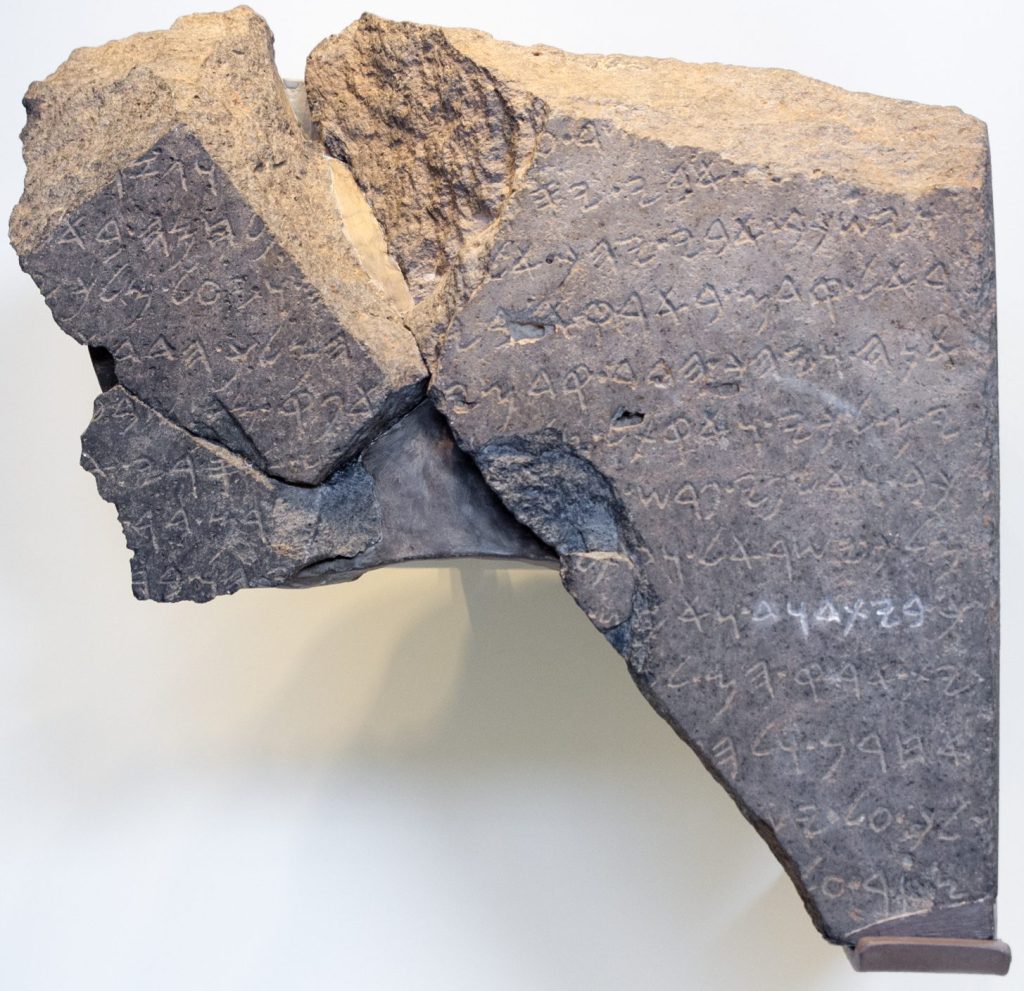The Mesha Stele, known as the Moabite Stone, is one of the most exceptional biblical archaeological artifacts ever found. Dating back to the 9th century B.C.E., the three-foot-tall stone has an ancient 34-line inscription describing how the Moabite vassal king Mesha rescued the Moabites from Israelite rule in a rebellion against the Israelites. Elements of the story match certain events in the Hebrew Bible.

Mesha Stele: Discovery of the Stone
An Anglican missionary discovered the Mesha Stele, Frederick Augustus Klein, at the site of ancient Dibon (now Dhibān in Jordan) in August 1868. A French archeologist made a single copy of the text on the stone, Clermont-Ganneau, before the stone was smashed into pieces by the Bani Hamida tribe.
The local tribes claimed it was an act of defiance against the Ottoman authorities, who had pressured the Bedouins to hand over the stele so that it could be given to Germany. Clermont-Ganneau scoured antiquities markets for the fragments and eventually reconstructed the entire stone.
The Moabites in the kingdom of Israel
The Moabites were ancient Semitic-speaking people who inhabited part of what is today the country of Jordan. The Bible is filled with accounts of battles between Israel and Moab. The stele details Mesha’s eventual victory over Omri (specifically the Tribe of Gad) as well as his accomplishments in building vital infrastructure for his people.
Tel Dan Stele

The Biblical account of Mesha’s revolt can be found in 2 Kings 3, which describes King Mesha as being under the protection of Israelite King Yoram (a descendant of Omri!), effectively serving as his vassal. This is all until Mesha decides to lead the Moabites in armed rebellion. The Mesha stele is significant because it helps corroborate important accounts found in the Book of Kings, even mentioning the infamous “House of Omri” by name!
The Story of the Stone
The stone features 33 lines of legible writing in a most likely Moabite language. The inscription tells how Mesha led Moab into victory against ancient Israel, defeating Israel on many fronts by capturing and reclaiming cities and slaying the inhabitants. Mesha also claims in the inscription that he reconstructed or repaired many cities, including a king’s residence, a fortress, and cisterns for water storage. Unfortunately, that is where the story ends, as the five lines of the inscription are broken.
According to the Bible, in the days of Omri and Ahab, Mesha was subdued to the Kingdom of Israel. And indeed, the stele does mention that for that period, Moab was enslaved to the Kingdom of Israel; the release from that bondage; the occupation of cities in the Kingdom of Israel, and the massive building projects that Mesha performed in his territory.
Today, the original Moabite Stone is housed at the Louvre Museum in Paris, and a copy is on display at the Oriental Institute at the University of Chicago.

